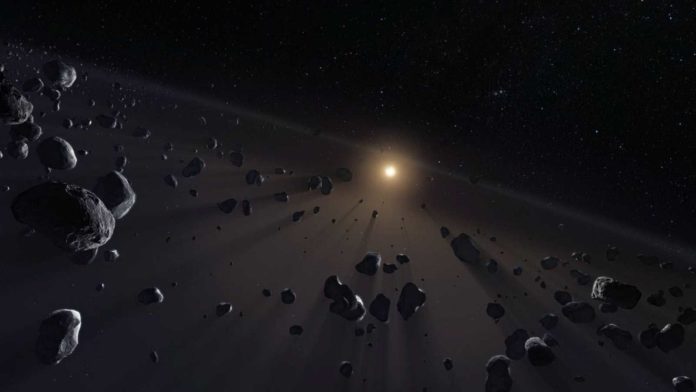Some of the strangest orbits of some objects have reached our solar system. According to astronomers, these mysterious orbits are to be formed by a mysterious ninth planet, can rather be clarified by the combined gravitational force of small objects orbiting the Sun beyond Neptune.
Scientists at the University of Cambridge and the American University of Beirut have now stated an alternative explanation to the so-called ‘Planet Nine’ hypothesis by proposing a disc made from small icy bodies with a combined mass as much as ten times that of Earth.
At the point when combined with a simplified model of the nearby solar system, the gravitational forces of the hypothesized disc can represent the surprising orbital engineering displayed by some objects at the external spans of the solar system.
While the new hypothesis isn’t the first to recommend that the gravitational forces of a massive disc made of small objects could dodge the requirement for a ninth planet, it is the main such hypothesis which can clarify the noteworthy features of the orbits while representing the mass and gravity of the other eight planets in our planetary system.
There is a Kuiper belt that lies beyond the orbit of Neptune- consists of small bodies left over from the formation of the solar system. Neptune and the other giant planets gravitationally influence the objects in the Kuiper Belt and beyond, collectively known as trans-Neptunian Objects (TNOs), which encircle the Sun on nearly-circular paths from almost all directions.
Though, astronomers have found some mysterious outliers. Since 2003, around 30 TNOs on exceedingly elliptical orbits have been spotted: they emerge from whatever is left of the TNOs by sharing, the equivalent spatial orientation.
This type of clustering can’t be clarified by our current eight-planet solar system architecture and has prompted a few space experts speculating that the strange circles could be affected by the presence of an up ‘yet unknown ninth planet.
Co-author Antranik Sefilian, a PhD student in Cambridge’s Department of Applied Mathematics and Theoretical Physics said, “The Planet Nine hypothesis is a fascinating one, but if the hypothesized ninth planet exists, it has so far avoided detection. We wanted to see whether there could be another, less dramatic and perhaps more natural, cause for the unusual orbits we see in some TNOs.”
“We thought, rather than allowing for a ninth planet, and then worry about its formation and unusual orbit, why not simply account for the gravity of small objects constituting a disc beyond the orbit of Neptune and see what it does for us?”
The ‘Planet Nine’ hypothesis suggests that to account for the unusual orbits of these TNOs, there would have to be another planet, believed to be about ten times more massive than Earth, lurking in the distant reaches of the solar system and ‘shepherding’ the TNOs in the same direction through the combined effect of its gravity and that of the rest of the solar system.
Professor Jihad Touma, from the American University of Beirut, and his former student Sefilian modeled the full spatial dynamics of TNOs with the combined action of the giant outer planets and a massive, extended disc beyond Neptune. The duo’s calculations, which grew out of a seminar at the American University of Beirut, revealed that such a model can explain the perplexing spatially clustered orbits of some TNOs.
In the process, they were able to identify ranges in the disc’s mass, its ‘roundness’ (or eccentricity), and forced gradual shifts in its orientations (or precession rate), which faithfully reproduced the outlier TNO orbits.
Sefilian said, “If you remove planet nine from the model and instead allow for lots of small objects scattered across a wide area, collective attractions between those objects could just as easily account for the eccentric orbits we see in some TNOs.”
“When observing other systems, we often study the disc surrounding the host star to infer the properties of any planets in orbit around it. The problem is when you’re observing the disc from inside the system, it’s almost impossible to see the whole thing at once.”
“While we don’t have direct observational evidence for the disc, neither do we have it for Planet Nine, which is why we’re investigating other possibilities. Nevertheless, it is interesting to note that observations of Kuiper belt analogs around other stars, as well as planet formation models, reveal massive remnant populations of debris.”
“It’s also possible that both things could be true – there could be a massive disc and a ninth planet. With the discovery of each new TNO, we gather more evidence that might help explain their behavior.”
The study is published in the Astronomical Journal.
